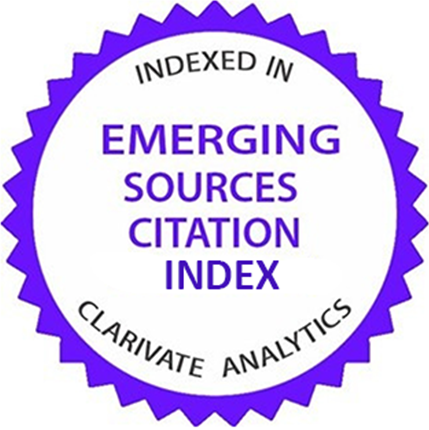The level of education of drivers is a main human factor in road traffic crashes
Abstract
I read Zemestani et al.'s paper titled ''Measuring the effect of vehicle safety on road traffic crash severity in Iran: using structural equation modeling'' with interest and enjoyed it a lot. The authors studied the association between vehicle safety and the severity of traffic crashes and evaluated the effects of various variables, including human factors, on the outcomes of road traffic crashes. Although the researchers investigated various human factors using different questionnaires and provided great information, they did not assess the drivers’ educational attainment as a potential human variable. If they had assessed the level of education of the drivers as a human factor, they could have improved the results of their study.
Haddon provided a matrix to explain the determinants influencing injuries and classified them into human, vector, physical, and social factors in 1980. Furthermore, researchers showed that the socio-demographic status of drivers (e.g., their educational attainment) is a human factor influencing road traffic accidents (RTA). Murray evaluated the school background of 2,980 male and 1,054 female young drivers who injured due to traffic accidents in Sweden. The educational attainment of the drivers was compared with representative samples of the same gender and age groups. The results showed that educational attainments were powerful determinants explaining RTA risk.
Moreover, Spoerri and colleagues assessed some demographic factors of RTA mortality in Switzerland. They showed that the risk of RTA was higher in those with primary education compared to people with higher educational attainment (hazard ratio=1.53; 95% CI: 1.29,1.81). Likewise, Arroyave et al. studied the association between educational level and premature mortality for specific causes of death, including RTA, in Colombia. They confirmed that RTA were more common in those with primary and secondary education than those with tertiary education. Furthermore, Harper and colleagues investigated educational level differences among those with fatal motor vehicle accidents from 1995 to 2010. They found an increase in adjusted death rates among people with less than a high school diploma compared to all other groups of educational levels.
Also, my colleagues and I studied such a relationship based on the national trauma registry of Iran (NTRI) and published the results recently. In the study, using multiple logistic regression, we showed that the odds of fatal injuries among victims with no formal, primary, and secondary education levels were significantly more than the odds of deaths among those with higher education levels. Moreover, in another study, my colleagues and I found a negative association between years of schooling and the risk of road traffic deaths.
In conclusion, appreciating the onerous efforts of Zemestani and colleagues, they had to consider the education variable in their analysis. The results can inform policymakers and health authorities to provide more training courses for people with lower educational levels. I hope our previous studies at the NTRI can be helpful to the Frontiers in Emergency Medicine’s readers.
2. Haddon JW. Advances in the epidemiology of injuries as a basis for public policy. Public health rep. 1980;95(5):411-21.
3. Braver E. Race, Hispanic origin, and socioeconomic status in relation to motor vehicle occupant death rates and risk factors among adults. Accid Anal Prev. 2003;35(3):295-309.
4. Spoerri A, Egger M, von Elm E. Mortality from road traffic accidents in Switzerland: longitudinal and spatial analyses. Accid Anal Prev. 2011;43(1):40-8.
5. Murray A. The home and school background of young drivers involved in traffic accidents. Accid Anal Prev. 1998;30(2):169-82.
6. Arroyave I, Burdorf A, Cardona D, Avendano M. Socioeconomic inequalities in premature mortality in Colombia, 1998–2007: the double burden of non-communicable diseases and injuries. Prev Med. 2014;64:41-7.
7. Harper S, Charters TJ, Strumpf E. Trends in socioeconomic inequalities in motor vehicle accident deaths in the United States, 1995–2010. Am J Epidemiol 2015;182(7):606-14.
8. Ghodsi Z, Movaghar VR, Zafarghandi M, Saadat S, Mohammadzadeh M, Fazel M, et al. The minimum dataset and inclusion criteria for the national trauma registry of Iran: a qualitative study. Arch Trauma Res. 2017;6(2):e39725.
9. Sharif-Alhoseini M, Zafarghandi M, Rahimi-Movaghar V, Heidari Z, Naghdi K, Bahrami S, et al. National trauma registry of Iran: a pilot phase at a major trauma center in Tehran. Arch Iran Med. 2019 ;22(6):286-92.
10. Saeednejad M, Zafarghandi M, Khalili N, Baigi V, Khormali M, Ghodsi Z, et al. Evaluating mechanism and severity of injuries among trauma patients admitted to Sina hospital, the national trauma registry of Iran. Chin J Traumatol. 2021;24(3):153-8.
11. Naghdi K, Baigi V, Zafarghandi M, Rahimi-Movaghar V, Fakharian E, Pahlavanhosseini H, et al. The association between the outcomes of trauma, education and some socio-economic indicators. Arch Trauma Res. 2023;12(2):84-9.
12. Saeednejad M, Sadeghian F, Fayaz M, Rafael D, Atlasi R, Houjaghan AK, et al. Association of social determinants of health and road traffic deaths: a systematic review. Bull Emerg Trauma. 2020;8(4):211-7.
| Files | ||
| Issue | Vol 8 No 2 (2024): Spring (April) | |
| Section | Letter to the editor | |
| DOI | 10.18502/fem.v8i2.15468 | |
| Keywords | ||
| Emergency medicine | ||
| Rights and permissions | |

|
This work is licensed under a Creative Commons Attribution-NonCommercial 4.0 International License. |










